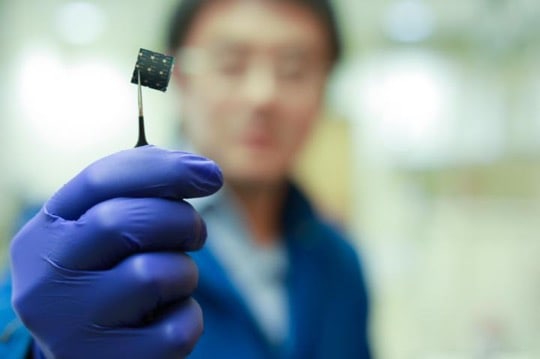Double-layer solar cell sets power generation efficiency record
Researchers at the University of California, Los Angeles (UCLA) have developed a double-layer solar cell that generates more energy from sunlight than typical solar panels.

The device, which owes its performance to an innovative double-layer design, is made by spraying a thin layer of perovskite (an inexpensive compound of lead and iodine) onto a commercially available solar cell. The solar cell that forms the bottom layer of the device is made of a compound of copper, indium, gallium and selenide, or CIGS.
In tests carried out at the US Department of Energy’s National Renewable Energy Laboratory, the cell was able to convert 22.4 per cent of the incoming energy from the sun, a record in power conversion efficiency for a perovskite-CIGS tandem solar cell. The previous record, set in 2015 by a group at IBM's Thomas J. Watson Research Center, was 10.9 per cent. The UCLA device's efficiency rate is similar to that of the poly-silicon solar cells that currently dominate the photovoltaics market.
The cell's CIGS base layer, which is about two microns thick, absorbs sunlight and generates energy at a rate of 18.7 per cent efficiency on its own, but adding the one micron-thick perovskite layer improves its efficiency.
Register now to continue reading
Thanks for visiting The Engineer. You’ve now reached your monthly limit of news stories. Register for free to unlock unlimited access to all of our news coverage, as well as premium content including opinion, in-depth features and special reports.
Benefits of registering
-
In-depth insights and coverage of key emerging trends
-
Unrestricted access to special reports throughout the year
-
Daily technology news delivered straight to your inbox










Water Sector Talent Exodus Could Cripple The Sector
Maybe if things are essential for the running of a country and we want to pay a fair price we should be running these utilities on a not for profit...